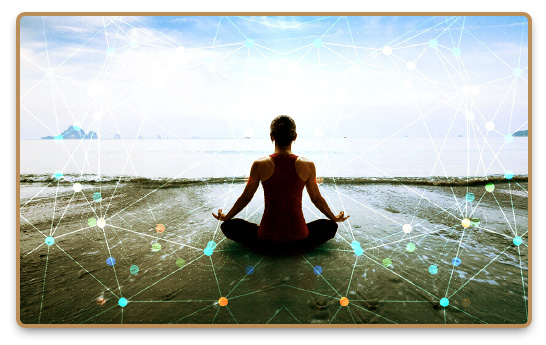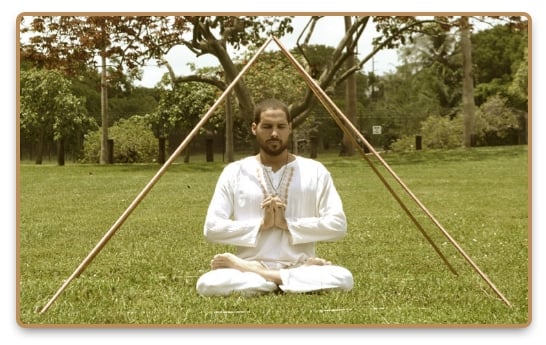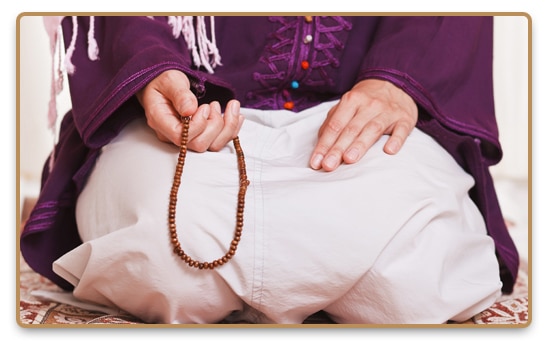
05 Feb Vipassana Meditation
Definition
Vipassana meditation is a type of meditation used by the Buddhist faith to help one reach a state of insight where one can contemplate the true nature of reality and see things for how they really are. It focuses on three main ideas: impermanence, suffering, and the illusion of self.
Vipassana meditation is almost always practiced in conjunction with samatha, which has the purpose of calming the mind helping one reach jhana, a state of mental calmness. The practice of Vipassana meditation is said to help practitioners reach nirvana, which is an end to suffering.
The Fall and Rise of Vipassana Meditation
At the genesis of Buddhism, it was a core practice. Eventually, it fell out of favor for hundreds of years, but found a strong resurgence in the 18th Century in Myanmar. It is grown to become one of the most popular practices in Buddhism, especially in South East Asia. It has reached high levels of popularity in the West, through the work of a few noted teachers.
One of the first to help non-monks learn the practice was Ledi Sayadaw. The most prominent purveyor of modern vipassana meditation was S. N. Goenka, who established the Vipassana Research Institute, and opened his meditation centers where students can join ten day meditation retreats to learn the fundamentals. These have become extremely popular, having taught thousands how to meditate.

In meditation you withdraw from others and focus your attention inside to gain purity of mind and wisdom energy. Then you must become extroverted and use this energy. When you take a long jump, you must first take some steps backward. Then you run, and make the jump. Like this, you first withdraw, observe yourself, develop clarity and unlock the wisdom. Then you make a long jump into society, to serve society. These two steps cannot be separated.
Method
Where to Practice Vipassana Meditation
Like most forms of meditation, setting in vipassana meditation is important. It was recommended by the Buddha that one meditate in the forest or under a tree, but any quiet place will suffice. Be sure that you are choosing a place where you are unlikely to be disturbed.
Sitting Position for Vipassana Meditation
Try to find a comfortable sitting position. Most choose to sit in one of the main cross-legged positions. If you lack the flexibility to sit comfortably in this way, other sitting positions can work. Even sitting in a chair is acceptable if you have back problems. Just keep in mind that your back should be straight and aligned, but not exaggeratedly so. The primary purpose for this is so that you can sit for long periods of time without increasing tension. Plus, the strength needed to maintain alignment may help the meditation practice.
Focus on Your Breath
Once you’ve found a comfortable position, begin to focus on your breath. It is not needed to force yourself to breathe deeply, merely breath normally. Give attention to the sensation of the air coming in and out of your body, concentrate on the feeling of your abdomen expanding and contracting with each inhale and exhale.
It is suggested that you view the breathing process as a continuous whole, not in a series of steps, like in many other forms of meditation. Another important thing for vipassana meditation is to not force your concentration, let it be gentle and natural. One tip to help you focus is to internally vocalize the sensation, describe with one word the sensation of the abdomen rising and falling.
See How to Deepen Vipassana Meditation Practice with a simple device.
It is not uncommon to lose concentration from time to time. People are imperfect. Many people will find their minds filling with random stray thoughts, especially if you’re new to the practice. The most important thing is to acknowledge the thoughts then return to the breath focus.
The same thing applies for when you are confronted with an external distraction. Keep this practice of labelling things with single words like you did the sensations. Accept it, even recognize it, name it, then bring your attention back to the breath. This labelling process allows us to have perceptions of things without contemplating them and this is a key aspect to vipassana meditation.
Letting Go
With some practice, you may find yourself able to reach the main goal of the practice: being focused on the sensations of the body, both positive and negative, and view them passively, as just experiences that have no weight or bearing on the self. You detach yourself from the quality of the sensations, because you ultimately accept that they are temporary. Many people naturally recognize this idea on a cognitive level, but such a meditation practice helps many to internalize it.
Coming Out of Vipassana Meditation
When you are finished with your sitting vipassana meditation, don’t just open your eyes and continue with your day. Focus on the steps to get there. Start with the intention to open the eyes, then the sensation of opening your eyes, continuing with the labelling, until you are ready to move on. It is possible to continue your meditation or general mindfulness throughout the day. Many meditate while walking for example. This can help you maintain a sense of mindfulness for all of your actions.
Walking Meditation
It is encouraged that a sitting meditation be supplemented with a period of walking meditation. Some even say that it’s basically impossible to get the full effects of a vipassana meditation practice without some period of walking meditation. The experts suggest choosing a short path, maybe 20 steps in length, and steadily walk back and forth.

Try to maintain the same level of mindfulness while walking as you do while sitting. Instead of placing your focus on the breath, pay attention to the sensation of walking, how the foot lands on the ground and lifts back up, or the flow of each leg moving. In general, people are recommended to do one hour periods of walking meditation, but a good ten minutes before a sitting vipassana meditation is a great way to help focus.
Ways to Help Learn Vipassana Meditation
It is argued by some teachers that the practice cannot be learned alone. A lot of people get their introduction at a silent meditation retreat. It’s not completely silent, in that the purpose is for students to learn the methods of meditation from the teachers, so there are usually classes and lectures, but most of the time is spent meditating in silence, saving words for only important questions for the instructors.
Other people find success in learning the practice through the use of meditation apps on their phones while offering guided meditations to help people get started.
Benefits
Escape The Cycle of Desire
People have remarked upon vipassana meditation’s ability to transform their outlook on life. One of the main tenets of Buddhism is that our suffering comes from us putting too much weight on seeking pleasure and avoiding discomfort. By accepting that all experiences, both good and bad, are fleeting, we can better accept them for what they are, and escape from the cycle of desire. This can allow people to be less stressed, less anxious, and generally more satisfied.
When you are not actively pursuing pleasure or dreading displeasure, there is little room for disappointment. However, reaching this point is not easy. There is some indication by the research that meditation may help people become generally more content and less anxious. Meditation has been shown to reduce rumination on negative thoughts in addition to this, meditation has been shown to reduce symptoms of anxiety disorders.
Vipassana Meditation is Not a Mystical Practice
There is an emphasis that this is not a mystical practice, wrapped up the trappings of many Eastern-based practices. Though it stems from Buddhism, it is seen as a secular practice, without a deity, and can be utilized by people of any religion. This can make it easier to utilize for people who are interested in meditation, but are off-put by the magical-seeming elements connected to other forms of meditation.
Similar Benefits to Mindfulness Meditation
In general, vipassana meditation has not been widely researched and many of the studies that have been conducted were poorly designed. Still, it bears a lot of similarities to mindfulness meditation (vipassana meditation is sometimes even called vipassana mindfulness meditation, so it is not unreasonable to think that much of the research in this area can be applied. In general, meditation has been shown to lower blood pressure and heart rate.

Start practicing today
The Egely Wheel is trusted by thousands of people who practice yoga, telekinesis, meditation and healing. This device is the best solution for measuring your energy flow and efficiency of healing, and you get instant feedback.
Many claim that the practice can help people have better focus, stop the mind from wandering or daydreaming, and eliminate a lot of the useless “chatter” of the brain. There does seem to be some cognitive benefits from meditation. One study showed that mindfulness can increase the density of the brain’s grey matter, and thus may improve memory. This form of meditation may have profound effects on our ability to relax. One study found that it can improve the quality of our sleep, both in the number of REM cycles and the depth of our sleep.

Practice Can Reduce Greed and Anger
Some even say that this type of meditation can help people be more compassionate and sympathetic. Likewise, many qualities that are typically frowned upon such as greed and anger may be reduced through this practice. Vipassana meditation has been introduced to prisons in India as a part of prisoners’ rehabilitation, and though it was not a formal study with controls, the researchers found there was some improvement in the attitudes of the participants. Other studies conducted in the United States have found similar findings, including a reduction in drug use (but not PTSD symptoms).
There’s also the suggestion from studies that this practice can raise emotional intelligence in prisoners. Another study showed that people who practiced vipassana meditation exhibited more compassion by their likelihood to give up their seat in a waiting room.
Vipassana Meditation in The Future
With the popularity of meditation apps, many more people are discovering the benefits of the practice and researchers are starting to look into the efficacy of this more technologically informed version of meditation. This marks an exciting frontier for the future of vipassana and other meditation practices.
18 Sources +
Egely Wheel has strict sourcing guidelines and relies on peer-reviewed studies, academic research institutions, and medical associations. We avoid using tertiary references.
- S. N. Goenka – https://en.wikipedia.org/
- Vipassanā – https://en.wikipedia.org/
- So You’re Thinking About a 10 Day Silent Meditation Retreat – https://medium.com/
- With mindfulness, life’s in the moment – https://news.harvard.edu/
- Mindfulness‐based cognitive therapy for residual depressive symptoms – https://onlinelibrary.wiley.com/
- Encyclopedia of Buddhism – https://www.amazon.com/
- What is Vipassana Meditation, also known as Insight Meditation? – https://www.headspace.com/
- Meditation Research – https://www.headspace.com/
- What Is Vipassana Meditation and How Do You Practice It? – https://www.lionsroar.com/
- Randomized Controlled Trial of Mindfulness Meditation for Generalized Anxiety Disorder: Effects on Anxiety and Stress Reactivity – https://www.psychiatrist.com/
- Practitioners of vipassana meditation exhibit enhanced slow wave sleep and REM sleep states across different age groups – https://www.researchgate.net/
- Meditation in a Deep South Prison: A Longitudinal Study of the Effects of Vipassana – https://www.researchgate.net/
- Mindfulness and Rumination: Does Mindfulness Training Lead to Reductions in the Ruminative Thinking Associated With Depression? – https://www.researchgate.net/
- Mindfulness and Compassion: An Examination of Mechanism and Scalability – https://www.researchgate.net/
- Vipassana Meditation: Systematic Review of Current Evidence – https://www.researchgate.net/
- Mindfulness Practice Leads to Increases in Regional Brain Gray Matter Density – https://www.researchgate.net/
- PTSD Symptoms, Substance Use, and Vipassana Meditation Among Incarcerated Individuals – https://www.researchgate.net/
- What is Vipassana? – https://www.vridhamma.org/
Discover more types of Meditation
Mindfulness Meditation
Mindfulness meditation is built upon drawing focus to the present moment so that it can be practiced anywhere. It has a myriad of benefits. Learn more...
Pyramid Meditation
Pyramid meditation is the practice of sitting beneath a four-sided pyramid structure for the use of amplifying the effects of meditation. Learn more...
Sufi Meditation
Sufi meditation is a varied style of meditation directly connected to the Islamic faith and Sufism. It is also called Murāqabah. Learn more...




